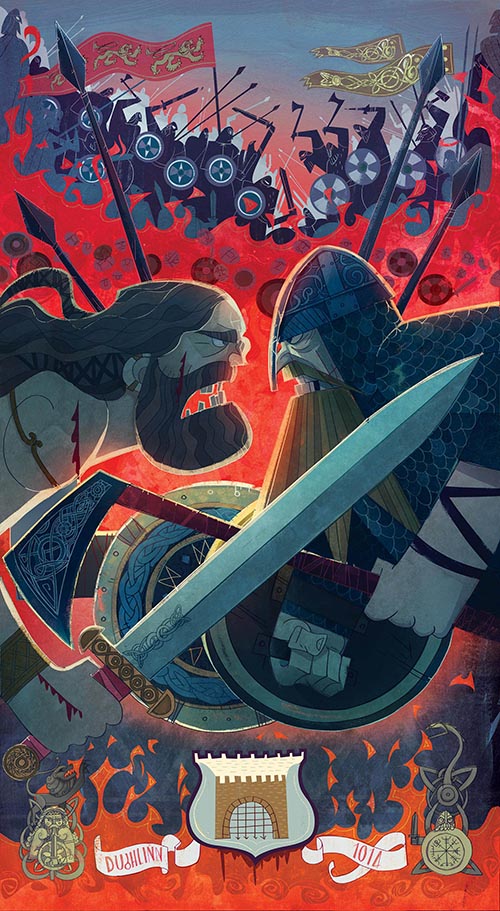Battle of Clontarf: The Combat
The earliest accounts of the battle do not specify its precise location, but it can be deduced from later testimony. It probably took place a few kilometres outside medieval Dublin, east of where the Tolka River flows into the north of Dublin Bay.
Brian’s forces engaged their Dublin and Leinster enemies, who had crossed the Tolka River to link up with a Viking fleet in the bay. The Annals of Ulster report that ‘a valiant battle was fought between them, the like of which was never before encountered’. Brian’s enemies were routed: six thousand were reportedly killed or drowned, including Earl Sigurðr the Stout of Orkney and King Máel Mórda of Leinster.
Cogadh Gáedhel re Gallaibh
The War of the Irish with the Foreigners
14th century
TCD MS 1319/2/10 f 164v
This is one of only two medieval copies of Brian’s heroic biography, Cogadh Gáedhel re Gallaibh. The text is open at an account of the exploits of Brian’s family members during the Battle of Clontarf.
Brian’s daughter (wife of King Sitriuc of Dublin) mocked the losing Viking army, comparing them to cows in heat. In a gibe at their overseas origins, she suggested that by fleeing into the sea they had ‘gained their inheritance’.
Epopeya: Brian Boru
Mexico, 1961
TCD MS 9932/142
The comic was part of the Epopeya (Epic) series produced by Editorial Novaro, a Mexican publishing company whose titles were popular throughout the Spanish-speaking world. In addition to featuring famous warriors and dramatic battles, the Epopeya series dedicated comics to contemporary technological achievements, such as the first human heart transplant.
Brian Boru, at the Battle of Clontarf
London, 1845
TCD MS 9787/176
In contrast to most 19th-century illustrations of Brian at the Battle of Clontarf, this engraving in the Pictorial Times shows Brian actively engaging in the fighting. Brian’s horse tramples upon his dying enemies, while in their midst an anchor and rudder reminds viewers of the Vikings’ overseas origins.
Brian’s standard displays a shamrock-encircled harp, whereas the banners of his enemies appear to depict birds, possibly in reference to the Raven Banner of one of Brian’s most prominent opponents, Earl Sigurd the Stout of Orkney.




